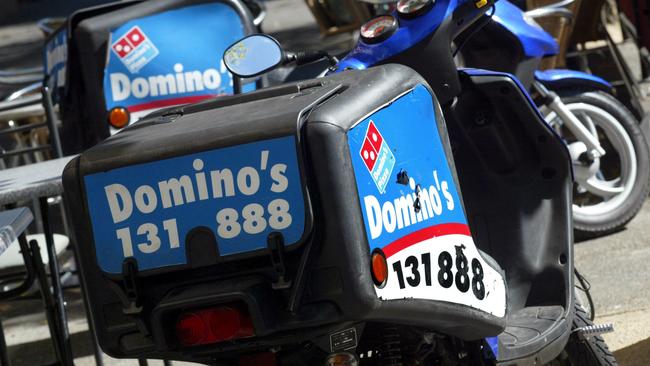Domino’s strategy delivers in the US as trends accelerate
Domino’s Pizza is attracting more consumers to its brand in the US, to the cost of corner stores and less established fast-food retailers.

Domino’s Pizza is attracting a greater slice of consumers to its brand in the US, to the cost of corner stores and less established fast-food retailers, as shoppers turn to brands they trust especially around issues of hygiene and zero contact delivery amid the coronavirus pandemic.
The US parent company also reinforced the crucial importance of its controversial “fortressing” strategy to future growth, which entails the opening of new stores in existing sales hubs to help shrink delivery times and be closer to pick-up customers, a strategy Domino’s Pizza chief executive Don Meij stressed was also key in Australia.
Addressing investors in the US for its second quarter trading update, Domino’s chief financial officer Jeff Lawrence said the brand was gaining strength as the health crisis and economic meltdown were severely denting the retail sector.
In the US, Domino’s same-store sales franchise business was up 16 per cent while company-owned stores were up 16.9 per cent. The strengthening of sales in the US as well as across key regions of Europe and Asia point to a solid second half for local franchise owner Domino’s Pizza Enterprises and its full-year result when it reports to investors on August 19.
“During the pandemic we have continued to attract new customers to our brand while focusing on safety, convenience and value,’’ Mr Lawrence said in an earnings briefing to US analysts and investors.
“We also note that existing customers, many of whom are part of our best-in-class loyalty program, continue to order in larger order sizes. Our delivery comp was also positively impacted by higher order counts in addition to larger order sizes. The accelerated levels of demand we saw during the middle of the second quarter remained elevated through the end of the quarter with no discernible drop-off.”
Domino’s Pizza Inc chief executive Richard Allison said the pandemic would accelerate some existing trends within the fast-food industry, such as contactless delivery and store pick-up, and that the pizza maker was able to leverage to improve its offer to consumers.
“I can tell you that we don’t know exactly what the new normal is going to look like in the US. COVID-19 has accelerated some of the trends that we were already seeing in motion around delivery, carryout and digital adoption.
“And we expect that customer expectations around safety and contactless experiences will remain heightened for the foreseeable future. When you think about a digital adoption, when you think about the migration from on-premise to off-premise through delivery and carryout, those things have just accelerated and leapt forward by a year or two or three years.”
The fortressing strategy would also be ramped up and made good business sense in the current economic climate.
“So what I look at what we need to do going forward, a lot of it is doubling down on the things that we’ve been doing. Fortressing, for example, to make sure that we continue to get closer and more convenient to our customers,’’ Mr Allison said.
Some investors in Australia have criticised the fortressing strategy in the past, arguing it cannibalised sales from existing stores, but Mr Meij rejected this argument and said the concentrated store rollout plan would ultimately prove a winning plan.
JPMorgan analyst Shaun Cousins said Domino’s Pizza Inc had revealed international same-store sales growth of 1.3 per cent for the quarter with the locally ASX-listed Domino’s Pizza expected to have outperformed the US parent led by its businesses in Japan, Germany and Australia.






To join the conversation, please log in. Don't have an account? Register
Join the conversation, you are commenting as Logout